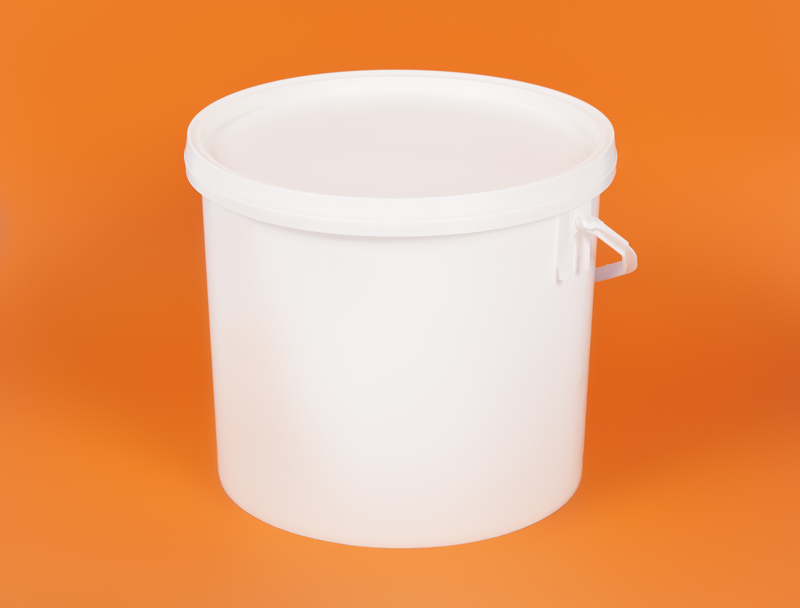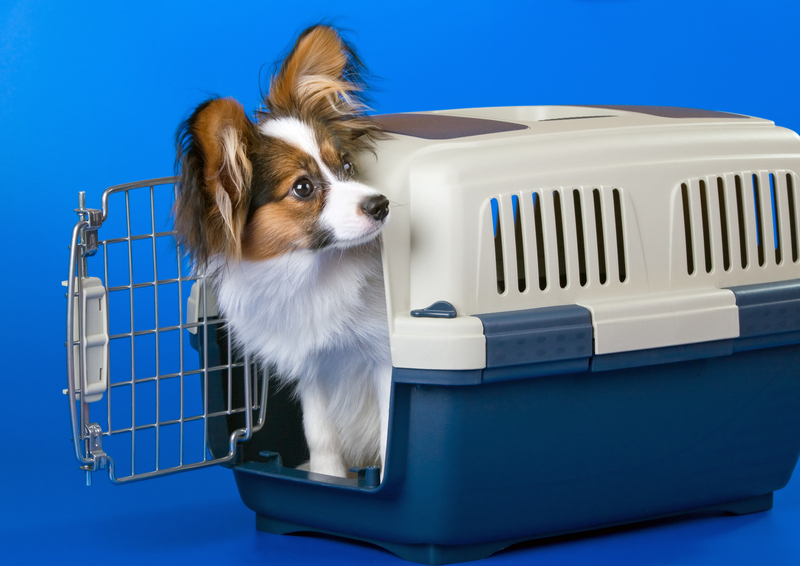Learn How to Store Your Freezer Efficiently When Idle
Posted on 18/05/2025
Learn How to Store Your Freezer Efficiently When Idle
Proper freezer storage is essential, not only when you're actively freezing goods but also during periods of idleness. Whether you're going on vacation, moving house, or just not utilizing your freezer for a time, knowing how to store your freezer efficiently when idle helps prevent odor, increase appliance lifespan, and conserve energy. In this comprehensive guide, we'll examine practical methods and expert-approved tips to keep your freezer in optimal condition--even when not in regular use.
Why Proper Idle Freezer Storage Matters
An idle freezer that's not cared for properly can lead to a number of issues, including mold growth, pest infestations, unpleasant odors, and a shortened appliance life. By learning efficient freezer storage techniques for idle times, you'll safeguard your appliance, save money, and be ready to load your freezer quickly when its use resumes.
- Prevents Unpleasant Odors: Storing your freezer correctly when idle averts the buildup of mold and mildew, which are the main culprits behind nasty smells.
- Reduces Power Consumption: An empty freezer uses unnecessary electricity. Efficient arrangements can lower your energy bill.
- Minimizes Damage: Proper storage procedures protect delicate components from corrosion, rust, and pests.
- Extends Lifespan: Routine cleaning and careful stowage prolong the service life of your freezer.

Step-by-Step Guide: Mastering Freezer Storage When Idle
Storing your freezer efficiently while it's not in use is crucial. Follow these detailed steps to ensure your freezer remains in excellent condition during idle periods.
1. Empty the Freezer Completely
Start by removing all food items from the freezer. This prevents food spoilage and contamination, and allows you to clean the interior thoroughly. Sort through your frozen goods: discard expired items and organize foods you'll use immediately.
- Plan ahead: Use up as much food as possible before you plan to idle your freezer.
- Donate or share usable goods: Don't let good food go to waste--consider giving extras to neighbors or local food banks.
2. Deep Clean Your Freezer
A thorough cleaning stops mold, mildew, and bacteria growth during the freezer's downtime. Here's how to clean efficiently:
- Unplug the appliance: Always disconnect your freezer to prevent electrical hazards.
- Defrost interior: If there's any frost buildup, allow it to melt completely. Place towels to catch water droplets.
- Clean shelves and drawers: Remove all removable parts and wash with warm, soapy water.
- Wipe down interior walls: Use a mixture of baking soda and water for a natural, odor-neutralizing cleaner. Avoid harsh chemicals.
- Dry thoroughly: Moisture is the enemy. Make sure every part is completely dry to prevent mold growth.
3. Address Odor Prevention
A stored freezer can develop stale odors, even when empty. To prevent this:
- Place an open box of baking soda or a bowl of activated charcoal inside the freezer.
- Commercial odor absorbers are also effective--but natural solutions are eco-friendly and affordable.
- Leave the freezer door slightly open to allow air circulation and prevent trapped odors.
4. Protect the Freezer Door Gasket
The door seal (gasket) is vital in maintaining efficiency. Prolonged closure can deform it, while leaving it open can invite dust and pests.
- Pro Tip: Wedge a soft cloth or a rolled-up towel in the door opening to keep it ajar by an inch or so.
- Wipe gasket with petroleum jelly to keep the rubber supple and prevent cracks.
5. Select the Ideal Storage Location
If your freezer is portable or you are repositioning it for long-term storage, be strategic about where you store it:
- Avoid damp areas: Moist, unventilated spots lead to rust and mold.
- Select a cool, dry location away from direct sunlight.
- Ensure the freezer is positioned upright to prevent compressor damage.
6. Consider Power Options
Should you unplug the freezer or keep it running during idle times? The answer depends on your expected timeframe:
- Short idle periods (less than 1 week): You can leave the freezer plugged in, set to the warmest safe setting, and mostly empty with a little water inside for stabilization (in covered containers).
- Longer periods (over 1 week): Always unplug the freezer and follow the full cleaning and drying protocol.
7. Maintain the Exterior
While focusing on the inside, don't neglect the exterior during idle freezer storage:
- Wipe down outer surfaces: Use mild detergent to remove dust and fingerprints.
- Check and clean the condenser coils, usually found behind or beneath the unit.
- Clear any debris from ventilation grilles for optimal airflow after reactivation.
8. Pest Control Measures
Unused freezers are attractive hiding spots for insects and rodents. Keep pests away by:
- Ensuring the appliance is completely free of food debris.
- Storing the freezer in pest-free, sealed environments.
- Using natural repellents like peppermint oil near the base if needed.
9. Leave a Note or Reminder
Attach a note to the freezer door with the date you idled it, cleaning steps taken, and scheduled reactivation. This is especially helpful if multiple family members may use the appliance.
Common Mistakes to Avoid When Storing a Freezer Idle
Even with the best intentions, certain missteps can compromise your freezer during periods of non-use. Avoid these pitfalls:
- Failing to dry thoroughly: Trapped moisture is the most common cause of mold and mildew.
- Leaving the freezer in damp or hot environments: Humidity and temperature extremes accelerate component degradation.
- Forgetting to ventilate: Keeping the door shut tightly is a guaranteed way to invite odor and mold issues.
- Neglecting gasket care: Old or cracked seals increase future energy use and reduce freezing efficiency.
- Storing flammable or toxic substances: Never use your freezer compartment for anything other than food (including during idle periods).
Restarting Your Freezer After Idle Storage
When it's time to use your freezer again, follow these tips to ensure a seamless return to service:
- Inspect thoroughly: Check for signs of pests, excess dust, or mold. Clean again if needed.
- Plug in and let cool: Turn the freezer on and allow it to reach its lowest temperature before adding any food.
- Refit shelves and bins: Make sure all interior parts are clean, dry, and securely installed.
- Stock gradually: Add food items in batches rather than all at once. This helps the freezer maintain temperature efficiently.
- Monitor for odors or leaks: Early vigilance will prevent small problems from becoming big ones.
Energy Saving Tips for Idle Freezers
Whether you leave your freezer running (rarely recommended for long-term idling) or turn it off, consider these extra energy efficiency tips:
- Unplug whenever possible: Completely disconnecting the appliance prevents phantom energy use.
- Insulate in the right location: Cold, shaded spots reduce temperature fluctuations if you must keep it plugged in.
- Regular maintenance: Even during downtime, inspect and clean your appliance every couple of months.
Frequently Asked Questions About Storing Freezers When Idle
- Can you leave a freezer empty and turned off?
Yes, but always follow cleaning and odor-prevention steps. Prop the door open to avoid mold and mildew buildup. - Is it safe to store a freezer in a garage or basement while not in use?
Yes, as long as the space is dry, well-ventilated, and insulated from temperature extremes. - How long can a freezer stay unplugged and unused?
Indefinitely, if stored properly! Always keep it clean, dry, and with the door ajar. - Should you cover a stored freezer?
You may use a breathable cloth or appliance cover to prevent dust, but avoid airtight plastic which can trap moisture inside.

Pro Tips for Long-Term Idle Freezer Storage
- Inspect regularly: Check on your freezer every few months, especially in humid climates.
- Document storage: Keep a record of when the freezer was idled, cleaned, and when you plan to reactivate it.
- Consult the manual: Some manufacturers provide freezer storage recommendations specific to your model.
Conclusion: Keep Your Freezer in Peak Condition When Idle
Learning how to store your freezer efficiently when idle is an investment in appliance health, home safety, and future food freshness. With careful planning, diligent cleaning, and simple precautions, you'll avoid the hassles of odors, pests, and costly repairs. Whether you're prepping for a short break or extended non-use, these expert freezer storage tips will help ensure your freezer is always ready for reliable, energy-efficient performance when you need it next.
For more freezer maintenance advice and home appliance care, explore our other detailed guides.

